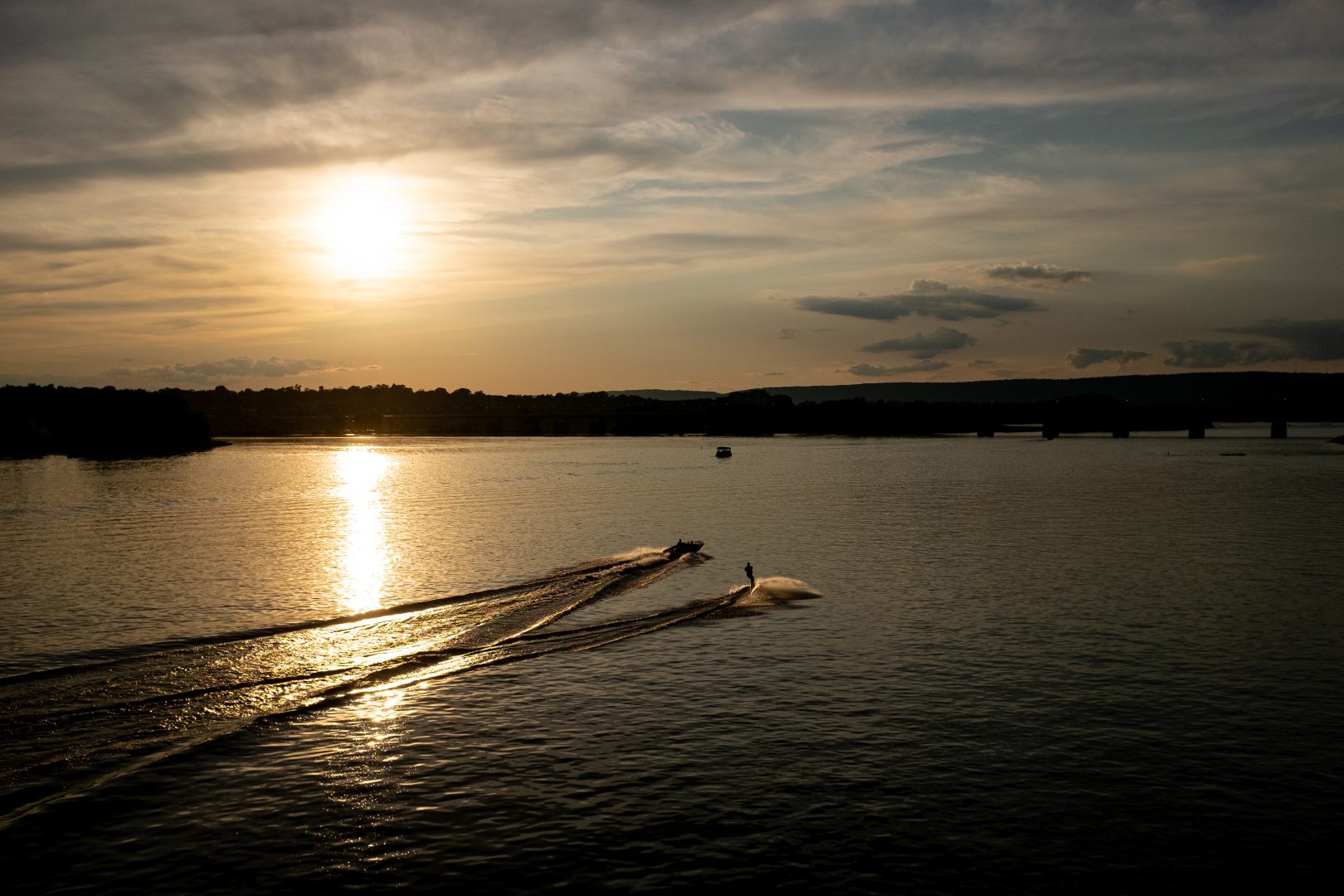
The Susquehanna River in Harrisburg as seen on Aug. 19, 2019. The river is the largest tributary to the Chesapeake Bay.
Ian Sterling for WITF


The Susquehanna River in Harrisburg as seen on Aug. 19, 2019. The river is the largest tributary to the Chesapeake Bay.
Ian Sterling for WITF

Ian Sterling for WITF
The Susquehanna River in Harrisburg as seen on Aug. 19, 2019. The river is the largest tributary to the Chesapeake Bay.
On the same day states in the Chesapeake Bay watershed announced they would sue the Environmental Protection Agency for failing to enforce cleanup plans, the agency said it is sending $6 million to bay states to help them reduce nitrogen runoff from farms.
The attorneys general in Maryland, Virginia and the District of Columbia said on Monday they plan to sue the EPA for failing to require Pennsylvania and New York to fix their plans to lower pollution flowing into the Chesapeake Bay to meet 2025 goals.
The Chesapeake Bay Foundation also filed a notice of intent to sue the EPA over its enforcement of cleanup plans. The watchdog group says Pennsylvania’s plan is underfunded by nearly $324 million a year and will not meet set targets.
The foundation did not respond to a request for comment on the new funding or how it might affect planned lawsuits.
In 2010, the EPA established a “pollution diet” for the bay known as the Total Maximum Daily Load (TMDL).
By 2025, the TMDL sets annual limits of runoff to the bay at 185.9 million pounds of nitrogen, 12.5 million pounds of phosphorus and 6.45 billion pounds of sediment. That would equal a 25 percent reduction in nitrogen, 24 percent reduction in phosphorus and 20 percent reduction in sediment from 2009 levels.
The commonwealth’s latest cleanup plan calls for an annual decrease in nitrogen runoff by 34 million pounds, phosphorus by 700,000 pounds and sediment by 531 million pounds, mainly through improved agricultural practices and storm water management.
The AGs planning to sue say the EPA has allowed Pennsylvania and New York to send about 10 million excess pounds of nitrogen into the Chesapeake Bay and its watershed every year. They say that threatens the success of efforts to restore the bay.
During a call with reporters on Monday, EPA Administrator Andrew Wheeler said all bay states need to make more progress on their commitments for 2025.
Wheeler acknowledged Pennsylvania’s current plan will only hit about 80 percent of the goal.
EPA says Pennsylvania has the largest commitment to reduce nitrogen among bay states. It will get more than half of the new money from EPA—nearly $3.7 million.
“We’ve determined that certain practices to reduce nitrogen from the agricultural sector are the greatest benefit for the lowest cost,” Wheeler said.
He added that the negative effects of nitrogen are about seven times that of phosphorus pollution, but it’s almost 100 times less costly to reduce nitrogen than phosphorus.
EPA Regional Administrator Cosmo Servidio said Pennsylvania could use the money to aid farmers in a number of methods, including using different manure techniques, planting cover crops, horse pasture management and wetland restoration.
Pennsylvania’s Agriculture Department is in discussions with stakeholders to determine how the money can be used, according to spokeswoman Shannon Powers.
StateImpact Pennsylvania is a collaboration among WITF, WHYY, and the Allegheny Front. Reporters Reid Frazier, Rachel McDevitt and Susan Phillips cover the commonwealth’s energy economy. Read their reports on this site, and hear them on public radio stations across Pennsylvania.
(listed by story count)
StateImpact Pennsylvania is a collaboration among WITF, WHYY, and the Allegheny Front. Reporters Reid Frazier, Rachel McDevitt and Susan Phillips cover the commonwealth’s energy economy. Read their reports on this site, and hear them on public radio stations across Pennsylvania.
Climate Solutions, a collaboration of news organizations, educational institutions and a theater company, uses engagement, education and storytelling to help central Pennsylvanians toward climate change literacy, resilience and adaptation. Our work will amplify how people are finding solutions to the challenges presented by a warming world.